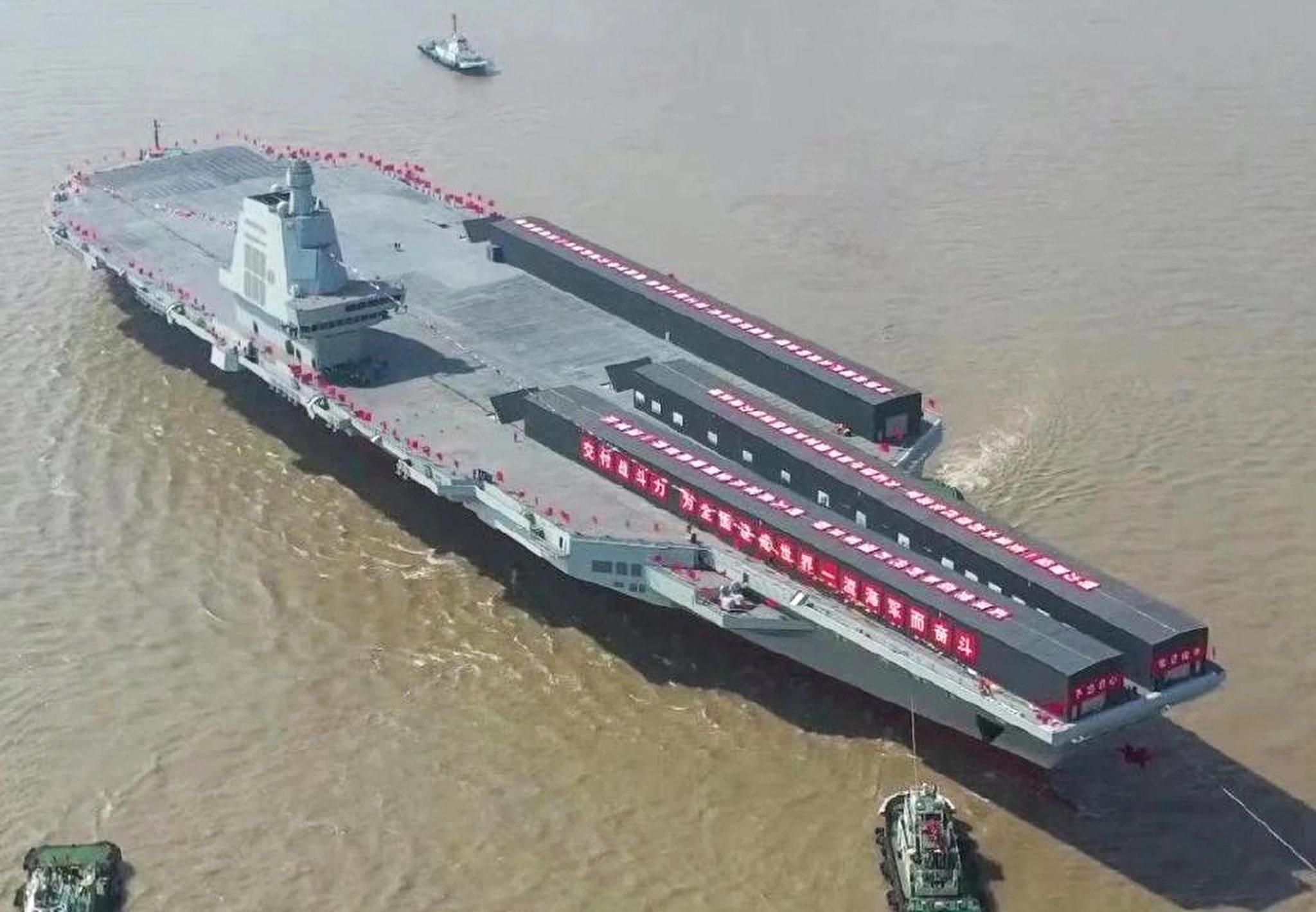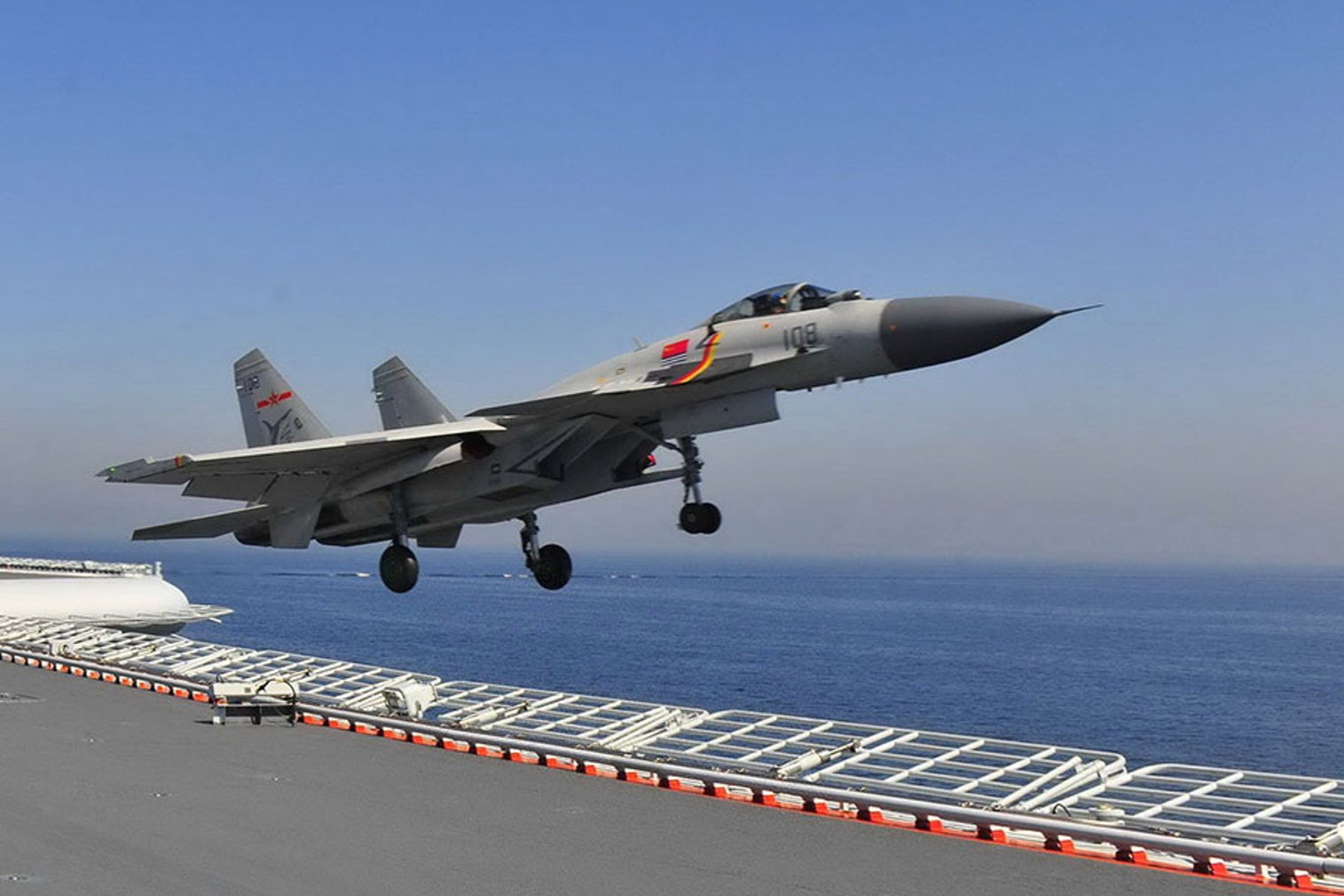Does quantity necessarily mean quality?
This question is being debated among military analysts all over the world, following the recent launch of its third aircraft carrier, the “Fujian”, said to be China’s most advanced aircraft carrier to date.
Incidentally, on May 8, the Fujian returned to port after successfully wrapping up its eight-day maiden voyage, marking what the Chinese experts say “a concrete step toward the commissioning of the world-class electromagnetic catapult-equipped strategic platform, which will greatly empower the Chinese People’s Liberation Army (PLA) Navy to better safeguard peace and stability when faced with maritime and aerial security threats.”
The maiden voyage of the Fujian came after it set sail on May 1 from Jiangnan Shipyard, where it was launched on June 17, 2022, and completed mooring tests and equipment calibrations.
Unlike its predecessors, the 60,000-ton-class Liaoning and Shandong that use ski jump ramps to assist aircraft take-offs, the 80,000-ton-class Fujian is said to be equipped with electromagnetic catapults to launch aircraft.
The larger displacement allows the Fujian to carry more aircraft, and the electromagnetic catapults enable the carrier to launch aircraft more efficiently, including launching heavier aircraft, launching more types of aircraft, launching fully loaded aircraft, and launching aircraft faster. Western analysts’ calculations vary on its capacity of hosting from 40 to 60 aircraft, probably the Shenyang J-15 fighters.
Though Fujian is not going to be put immediately into the services of the PLA Navy as it is “not fully ready,” its acquisition is said to be in the fitness of things that go with China’s emergence as the country possessing the largest Navy in the world.
Though India is a major naval power in the region, its government is still to make a firm decision on whether to accede to the Indian Navy’s demand for a third Carrier, after INS Vikramaditya and INS Vikrant, to preserve India’s stature as the “largest resident naval power” in the Indian Ocean. And if eventually, it takes a decision to build the third one, by the time it does get commissioned, the Vikramaditya will be obsolete; it is feared.
Coming back to China, with a battle force of over 370 platforms, including major surface combatants, submarines, ocean-going amphibious ships, mine warfare ships, aircraft carriers, and fleet auxiliaries, it may be the largest naval power in the world at the moment. But, in terms of potency, the United States still maintains a clear edge, if experts are to be believed.
According to the U.S. Congressional Research Service, “the U.S. Navy has taken a number of actions to counter China’s naval modernization effort. Among other things, the U.S. Navy has shifted a greater percentage of its fleet to the Pacific; assigned its most-capable new ships and aircraft to the Pacific; maintained or increased general presence operations, training, and developmental exercises, and engagement and cooperation with allied and other navies in the Indo-Pacific; increased the planned future size of the Navy; initiated, increased, or accelerated numerous programs for developing new military technologies and acquiring new ships, aircraft, unmanned vehicles, and weapons; developed new operational concepts for countering Chinese maritime A2/AD forces; and signaled that the Navy in coming years will shift to a more-distributed fleet architecture that will feature substantially greater use of unmanned vehicles. The issue for Congress is whether to approve, reject, or modify the Biden Administration’s proposed U.S. Navy plans, budgets, and programs for responding to China’s naval modernization effort”.
In the context of carriers, not only does the U.S. have more than China, but it is also said to possess much better quality in terms of reach and power.

As Steven Wills of America’s Center for Maritime Strategy argues, Chinese carriers have not embarked on extended global deployments in support of Chinese overseas policy and interest. They have instead formed a “fleet in being” in the Chinese “near abroad,” within the “first island chain,” the maritime space bounded by the East Asia continental mass and the first groups of archipelagic states, including the western boundary of the Philippines and Taiwan and stretching from Malaysia north to the Kamchatka peninsula.
Unlike American carriers like the USS Gerald R. Ford (CVN 78) and U.S. Nimitz-class, Fujian is conventionally powered, and that reduces its range and speed. It cannot stay in the High Seas for long. It must either call at a port or be met by a tanker at sea to refill.
In other words, its role will be more limited to China’s immediate neighborhood, unlike the U.S. carriers that regularly operate for long periods far away from home and stay at sea for as long as crew provisions last.
Secondly, “Chinese carrier operations have been limited by U.S. standards, with Chinese flattops seldom achieving more than 60 sorties per day, as compared to the U.S. Nimitz class, which routinely achieves 120 daily sorties and the new Ford-class that has reached 160 sorties in exercise events. The Chinese quest for carrier aviation is starting to show some success, but it remains a nascent capability in comparison to that of the United States, Great Britain, and France, whose carriers deployed throughout the world during the Cold War”, Wills points out.
Thirdly, according to Christopher McFadden, a military engineering analyst, U.S. carriers currently operate some of the most advanced jet aircraft in the world. With the addition of the “Lightning II” to their compliments, U.S. carriers likely have the better aircraft, at least on paper.
In contrast, the Chinese J-15 is effectively a 4th generation fighter. Also known as the “Flying Shark,” it was developed by the Shenyang Aircraft Corporation. It is based on the Russian Sukhoi Su-33 aircraft, which China acquired from Ukraine in the late 1990s. And this has had numerous issues, including many crashes, according to the experts.

“Given the limitations of the STOBAR system, the J-15 also holds the unpleasant distinction of being the heaviest carrier-based fighter in service. The J-15 weighs 38,000 pounds at empty weight, almost 6,000 pounds more than the F/A-18E/F Super Hornet and 4,000 pounds more than the F-35C”, McFadden points out, adding that these systems are unlikely to be as effective as American versions.
Fourthly, in any eventual conflict in the Indo-Pacific, the Chinese carrier will not only meet the challenge from the U.S. Navy but also from naval forces from allies and partners such as Japan and Australia.
Even India, Americans calculate, will be of great help, given the fact that New Delhi is expanding the existing bilateral forms of naval cooperation (e.g., U.S.-Japan, U.S.-Australia, U.S.-India) into trilateral (e.g., U.S.- Japan-Australia, U.S.-Australia-India) or quadrilateral (U.S.-Japan-Australia-India) forms.
All this “could enhance the ability of the United States and its allies in the Indo-Pacific region to balance against China’s growing military capabilities and deter potential assertive actions by China,” says the aforementioned U.S. Congressional Research Service report.
However, this report also cautions, which many analysts tend to agree, that while the United States has superior naval capability than China, the latter might eventually draw even with or surpass the former in view of Beijing’s pace of naval modernization effort since the 1990s.
What, therefore, is needed is an increased budget for the U.S. Navy to plan new programs for responding to China, the report suggests to the U.S. Congress.
- Author and veteran journalist Prakash Nanda is Chairman of the Editorial Board – EurAsian Times and has commented on politics, foreign policy, and strategic affairs for nearly three decades. A former National Fellow of the Indian Council for Historical Research and recipient of the Seoul Peace Prize Scholarship, he is also a Distinguished Fellow at the Institute of Peace and Conflict Studies.
- CONTACT: prakash.nanda (at) hotmail.com
- Follow EurAsian Times on Google News




